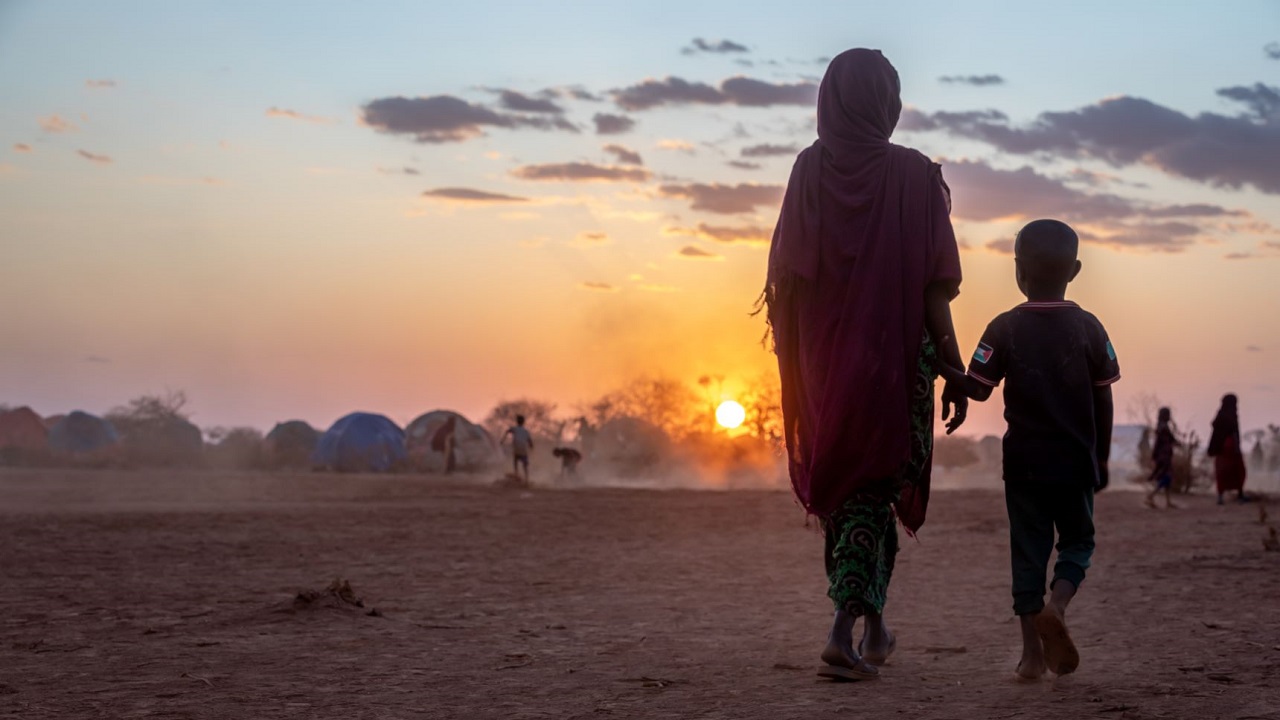Climate Migration : A Livelihood Crisis in Motion
Context:
South Asia is increasingly witnessing migration driven by climate-related disasters. In India’s Bundelkhand region, recurring droughts have pushed farmers to abandon their land, while river erosion in Bangladesh is displacing entire communities. These patterns underscore the growing phenomenon of climate-induced migration, which threatens livelihoods, food security, and socio-economic stability across the region.
What is Climate Migration?
-
Climate migration refers to the forced movement of people due to sudden or slow-onset climate events like:
-
Floods, droughts, cyclones
-
Sea-level rise, desertification, heatwaves
-
-
As per the International Refugee Assistance Project (2022), nearly 20 million people are displaced every year due to climate-related disasters.
-
Migration may be:
-
Seasonal
-
Cyclical
-
Permanent
-
-
Poor and rural households are most vulnerable due to lack of adaptive resources.
Case Examples and Climate Data
-
Bundelkhand (India):
-
Experienced 8–9 major droughts between 1998 and 2009.
-
Temperature projected to rise by 2–3.5°C by 2100. (Source: IMD)
-
-
Charpauli (Bangladesh):
-
In 2022, 500+ houses were washed away in just one week due to Jamuna River erosion.
-
The riverbank is eroding at a rate of 12–52 meters annually.
-
-
Vidarbha–Marathwada (India):
-
Sugarcane workers walk hundreds of kilometres amid 50°C+ heat and erratic monsoon patterns.
-
Key Drivers of Climate Migration
-
Drought and Rainfall Variability:
-
Failure of monsoon in Bundelkhand and Marathwada collapsed agricultural activity.
-
-
Flooding and River Erosion:
-
Villages like Charpauli lose homes annually due to swelling rivers and glacial melt.
-
-
Extreme Heat and Water Scarcity:
-
Maharashtra’s sugarcane belt sees rising temperatures and falling groundwater levels.
-
-
Indebtedness and Income Collapse:
-
Crop failure pushes families into bonded seasonal labour, accepting ₹50,000–₹5 lakh advances from sugar factories.
-
-
Loss of Livelihood Assets:
-
Soil degradation, land erosion, and rising input costs further stress farming communities.
-
Impacts of Climate Migration
-
Rural Displacement:
-
Entire families are leaving villages, changing demographics and land-use patterns.
-
-
Urban Informality:
-
Migrants settle in urban slums without access to sanitation, housing, or welfare (e.g., Bundelkhand migrants in Delhi).
-
-
Gendered Vulnerability:
-
Women left behind face sexual violence, financial burden, and higher school dropout rates among children.
-
-
Labour Exploitation:
-
Contract-bound workers (e.g., sugarcane cutters) are denied exit options—leading to modern debt bondage.
-
-
Social Disintegration:
-
Long-term migration weakens rural community ties and cooperative farming structures.
-
Challenges in Addressing Climate Migration
-
No Legal Recognition:
-
India does not legally recognize climate migrants, excluding them from disaster relief or migration policy.
-
-
Lack of Social Security Portability:
-
Migrants lose access to ration cards, pensions, and MGNREGA benefits after relocation.
-
-
Poor Living Conditions:
-
Many migrants live in temporary shelters or plastic tents with no access to clean water, electricity, or toilets.
-
-
Debt Cycles:
-
Earnings linked to harvest yields often push families into multi-year cycles of debt.
-
-
Data Deficit:
-
There is no centralized system to track climate migration, leading to slow and under-informed policymaking.
-
Way Forward: Policy and Planning
-
Legal Recognition:
-
Include climate migrants under existing laws like the NDMA Act and internal migration policies.
-
-
Portability of Welfare Schemes:
-
Ensure seamless access to benefits through One Nation One Ration Card and eShram platforms.
-
-
Climate-Resilient Employment:
-
Expand MGNREGA to include water conservation, drought-proofing, and agroforestry.
-
-
Skill Development for Migrants:
-
Provide mobile skill training and seasonal job matching for migrating workers (e.g., sugarcane couples).
-
-
Climate Migration Index:
-
Create a district-level vulnerability mapping system using data from IMD, Census, SECC, to enable timely policy response.
-
Conclusion
Climate migration is not a future threat—it is a present reality, particularly for India's rural poor. Without adaptive policy frameworks and resilient social protection, such migration will remain forced and exploitative. India’s development approach must now factor in mobility, dignity, and resilience in the era of climate change.



.jpg)
Comments (0)